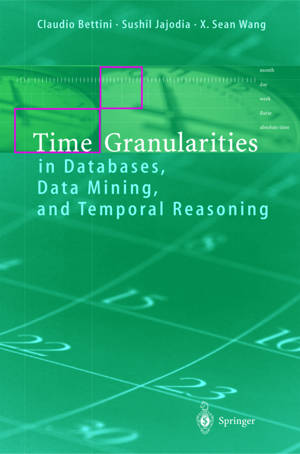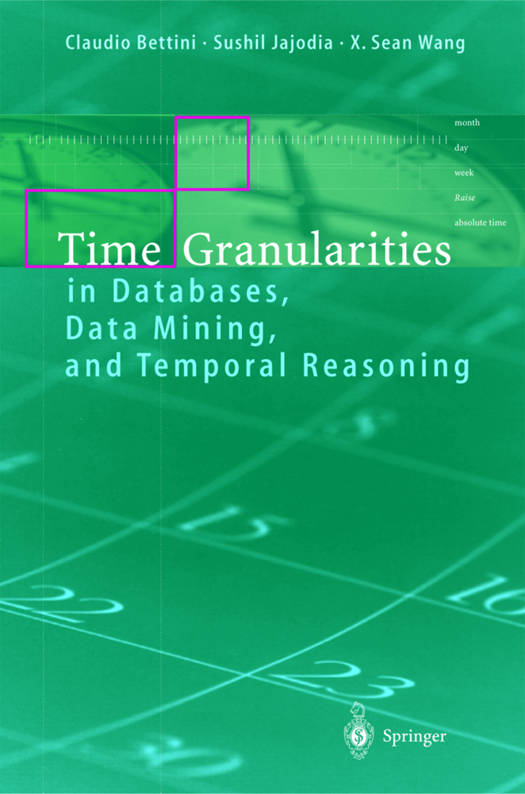
Door een staking bij bpost kan je online bestelling op dit moment iets langer onderweg zijn dan voorzien. Dringend iets nodig? Onze winkels ontvangen jou met open armen!
- Afhalen na 1 uur in een winkel met voorraad
- Gratis thuislevering in België vanaf € 30
- Ruim aanbod met 7 miljoen producten
Door een staking bij bpost kan je online bestelling op dit moment iets langer onderweg zijn dan voorzien. Dringend iets nodig? Onze winkels ontvangen jou met open armen!
- Afhalen na 1 uur in een winkel met voorraad
- Gratis thuislevering in België vanaf € 30
- Ruim aanbod met 7 miljoen producten
Zoeken
Time Granularities in Databases, Data Mining, and Temporal Reasoning
Claudio Bettini, Sushil Jajodia, Sean Wang
Hardcover | Engels
€ 52,95
+ 105 punten
Uitvoering
Omschrijving
Calendar units, such as months and days, clock units, such as hours and seconds, and specialized units, such as business days and academic years, play a major role in a wide range of information system applications. System support for reasoning about these units, called granularities in this book, is important for the efficient design, use, and implementation of such applications. The book deals with several aspects of temporal information and provides a unifying model for granularities. It is intended for computer scientists and engineers who are interested in the formal models and technical development of specific issues. Practitioners can learn about critical aspects that must be taken into account when designing and implementing databases supporting temporal information. Lecturers may find this book useful for an advanced course on databases. Moreover, any graduate student working on time representation and reasoning, either in data or knowledge bases, should definitely read it.
Specificaties
Betrokkenen
- Auteur(s):
- Uitgeverij:
Inhoud
- Aantal bladzijden:
- 230
- Taal:
- Engels
Eigenschappen
- Productcode (EAN):
- 9783540669975
- Verschijningsdatum:
- 13/07/2000
- Uitvoering:
- Hardcover
- Formaat:
- Genaaid
- Afmetingen:
- 163 mm x 242 mm
- Gewicht:
- 494 g

Alleen bij Standaard Boekhandel
+ 105 punten op je klantenkaart van Standaard Boekhandel
Beoordelingen
We publiceren alleen reviews die voldoen aan de voorwaarden voor reviews. Bekijk onze voorwaarden voor reviews.











